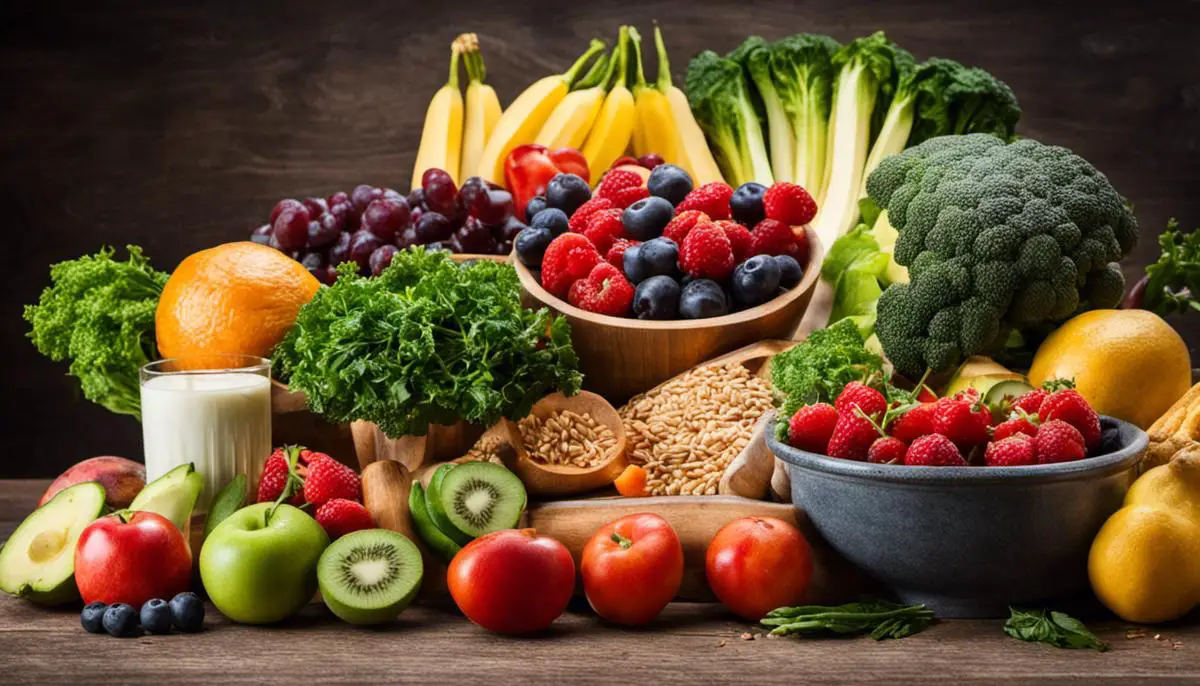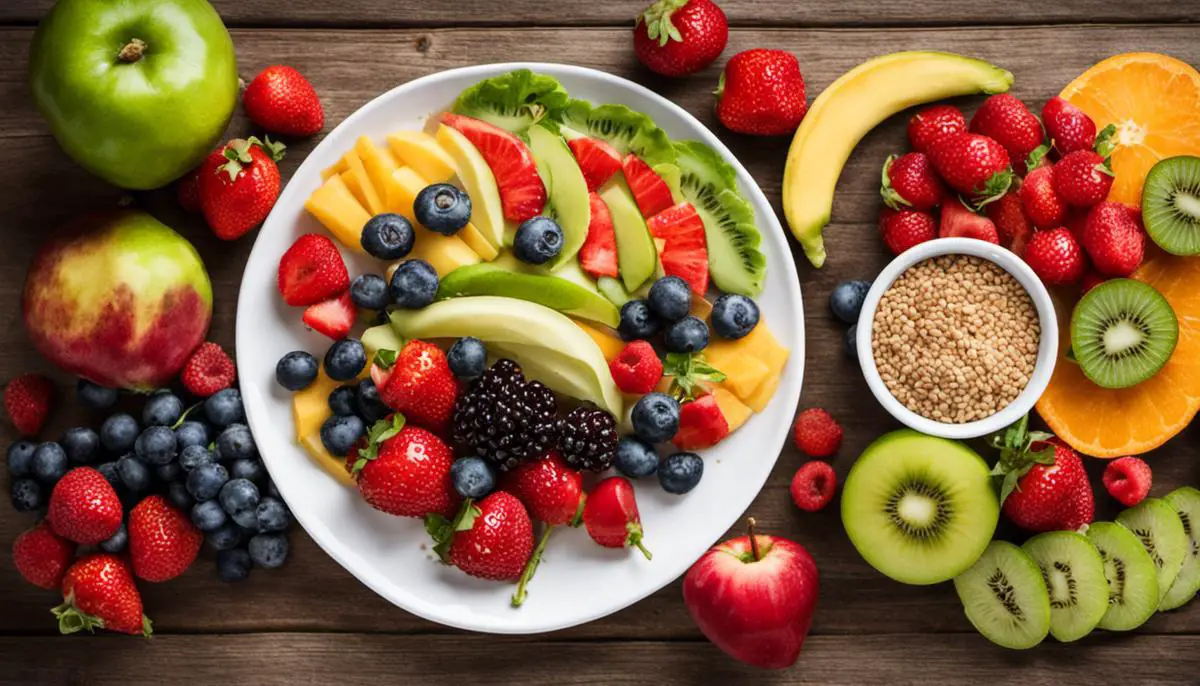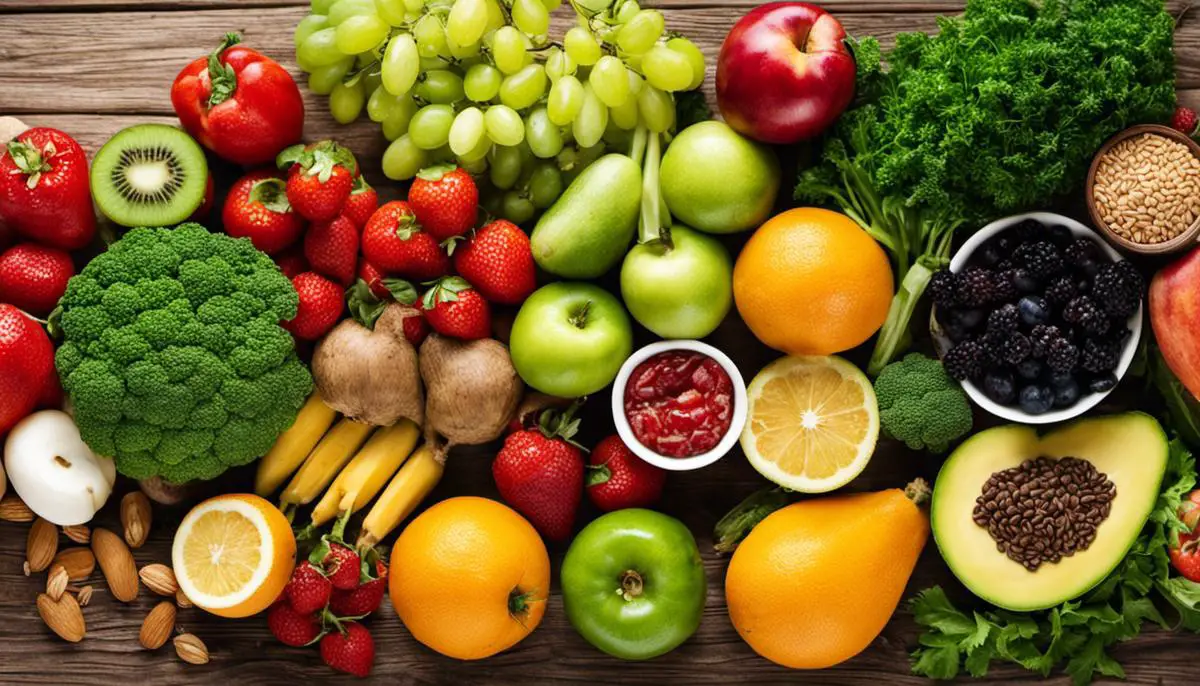Stroke is a formidable health threat experienced by millions of people around the world. Understanding the nature of stroke, its types, causes, and long-standing effects is crucial for coming to terms with the significance of prevention. It is widely established that our dietary habits play a crucial role in stroke prevention. As such, it is essential to delve into an in-depth exploration of diet and its contribution to stroke reduction, not merely as an abstract concept but as a way of life that we can put into practice. This includes a detailed understanding of specific foods, nutrients, and healthy eating habits beneficial for stroke prevention, and practical guidelines for implementing an anti-stroke diet.
Understanding Stroke
Understanding Stroke: An Overview
Stroke is a critical medical condition typically caused by an interruption in blood flow to the brain. It may occur when a blood vessel delivering oxygen and nutrients to the brain gets blocked by a clot or bursts. The neurons begin to die when the part of your brain becomes deprived of blood and oxygen.
There are mainly three types of stroke: ischemic, hemorrhagic, and transient ischemic attacks (TIA), often referred to as mini-strokes. Ischemic stroke is the most common type, responsible for almost 87% of all strokes. It happens when the arteries to your brain are constricted or block, leading to severely reduced blood flow (ischemia). Hemorrhagic stroke occurs when a blood vessel ruptures in your brain or between your skull and your brain. It’s less common but more deadly than ischemic stroke. TIA is a temporary period of symptoms similar to those of a stroke but generally doesn’t cause permanent damage.
Consequences of Stroke
Stroke can have varied and severe effects depending on the part of the brain affected and the length of time without blood circulation in that area. Common effects include sudden weakness or numbness on one side of the body, severe headache with no known cause, and trouble speaking or understanding speech. It can lead to long-term challenges including paralysis or muscle weakness, trouble with thinking, awareness, attention, learning, judgment, and memory. Moreover, stroke survivors often struggle with emotional disturbances like depression and other emotional problems.
Role of Diet in Preventing Stroke
Following a healthy diet is essential for overall health and can also contribute significantly to the prevention of stroke. Unhealthy diet choices are risk factors for stroke because they can lead to high blood pressure, high cholesterol, diabetes, and obesity. A diet low in saturated fats and cholesterol, with plenty of fresh fruits, vegetables, whole grains and lean proteins can help maintain ideal blood pressure levels and reduce the risk of stroke.
The DASH (Dietary Approaches to Stop Hypertension) and Mediterranean diets are widely recommended for stroke prevention. These diets emphasize fruits, vegetables, whole grains, lean proteins, and healthy fats while limiting salt, added sugars, and processed foods. Additionally, maintaining a healthy weight and exercising regularly can play a critical role in stroke prevention.
Alcohol and Stroke Risk
Moderate to heavy alcohol consumption can lead to high blood pressure, ischemic strokes, and even a TIA. Moreover, alcohol can interact with some drugs that doctors commonly prescribe for stroke, such as anticoagulants, antiplatelet medications, or cholesterol-lowering medicines.
Understanding the Science
Recent studies have suggested that certain nutrients can affect stroke risk. Potassium may reduce stroke risk by lowering blood pressure, while flavonoids found in fruits, vegetables, and dark chocolate have been linked to lower stroke risk. However, research in this area is ongoing.
Understanding stroke and the influence diet can have on its risk factors is fundamental for anyone seeking to improve their health and prevent such medical emergencies. It is essential to remember that adopting a healthy diet along with regular physical activity, moderate alcohol intake, and other healthy lifestyle habits can lead to a marked decrease in your risk of stroke.

The Role of Diet in Stroke Prevention
The Basics of Stroke and Associated Risks
A stroke is a grave medical condition that arises when the flow of blood to some brain regions gets interrupted, resulting in oxygen and nutrient deprivation for certain brain tissues. The main risk factors associated with stroke encompass high blood pressure, elevated cholesterol levels, smoking, diabetes, unbalanced diet, physical inactivity, obesity, heavy consumption of alcohol, and specific inheritable factors.
Diet and Stroke Prevention
Several research studies have found that certain diet patterns, such as the Mediterranean Diet, DASH diet, and diets rich in fruits, vegetables, whole grains, lean proteins, and low-fat dairy products can reduce the risk of stroke. These diets, which focus on nutrient-dense foods and limit intake of saturated and trans fats, salt, and added sugars, can help control blood pressure, lower cholesterol, control blood sugar levels, aid in weight management, and promote overall cardiovascular health.
Significance of Healthy Eating Habits
Establishing healthy eating habits is crucial in stroke prevention. Consuming a diet rich in fruits and vegetables can provide essential vitamins, minerals, and fiber that help maintain optimal health. Whole grains, which contain fiber, B vitamins, and important minerals, promote heart health by reducing blood cholesterol levels and the risk of heart disease. Lean proteins, such as chicken, fish, beans, and legumes, supply the necessary amino acids for cellular repair and function.
Controlling Blood Pressure Through Diet
High blood pressure, also known as hypertension, is one of the major risk factors for stroke. A diet rich in fruits, vegetables, whole grains, lean proteins, and low-fat dairy products—along with limited intake of sodium—can help lower blood pressure. The DASH diet, which stands for Dietary Approaches to Stop Hypertension, is often recommended to reduce blood pressure.
Maintaining Optimal Weight
Maintaining a healthy weight is another key strategy in stroke prevention. Overweight and obesity increase the risk of hypertension, high cholesterol, diabetes, and thus, stroke. Consuming a diet low in calorie-dense foods and high in nutrient-dense foods, coupled with regular physical activity, can aid in weight loss or maintaining a healthy weight.
Reducing Sodium and Increasing Potassium Intake
Sodium, found in table salt and many processed foods, can raise blood pressure. Conversely, potassium, found in fruits and vegetables, can counter the effects of sodium on blood pressure. So, it’s beneficial to reduce sodium intake and increase potassium intake for stroke prevention.
Limiting Alcohol and Avoiding Smoking
Excessive alcohol consumption can raise blood pressure, and heavy drinking is linked to stroke. Limiting alcohol intake to moderate levels (up to one drink a day for women and up to two drinks a day for men) is advised. As for smoking, it can raise blood pressure and reduce the amount of oxygen that reaches the brain, which increases the risk of stroke.
A holistic approach to health is always imperative, incorporating regular medical check-ups, consistent medication intake if prescribed, and engaging physical activity. While we cannot ignore these aspects, it’s important to underline that nutrition and dietary habits play a critical role in preventing conditions such as strokes. Therefore, maintaining a balanced diet should form a significant part of your health management strategy.

Specific Foods and Nutrition
Key Dietary Guidelines for Stroke Prevention
Incorporating foods high in fiber, lean proteins, fruits, and vegetables into your diet can help in significantly reducing your risk of stroke. Dietary fiber offers many health benefits – it helps to control blood sugar levels, reduce cholesterol, and maintain a healthy weight. You can easily find fiber in legumes, whole-grains, fruits, and vegetables, all of which are excellent sources.
When it comes to proteins, opt for lean choices like fish, skinless poultry, beans, and low-fat dairy products. These proteins offer the essential amino acids your body needs without the drawback of saturated fats associated with higher fat meats, thereby promoting good health and helping to prevent stroke.
Consumption of a diverse range of fruits and vegetables is also crucial in stroke prevention. They are rich in antioxidants, a guard against the harmful free radicals that can damage the body. Integrating a plethora of colorful fruits and vegetables into your meals is an easy and tasty way to ensure you acquire these antioxidants in abundance.
Limiting Risky Food Consumption
In addition to including healthy foods in your diet, it’s just as necessary to limit the intake of other foods that could increase the risk of stroke. Foods high in sodium, sweets, and red meats should be consumed in moderation.
Excessive sodium consumption can lead to high blood pressure, a significant risk factor for stroke. As such, one should aim to limit the amount of processed food, which tends to be high in sodium, in their diet and opt for fresh foods instead.
Sweets and added sugars, often found in desserts, sugary drinks, and processed foods, can contribute to weight gain, diabetes, and high blood pressure – all risk factors for stroke. Limiting the intake of sweets therefore helps in managing these risks.
Red meats, especially those that are processed like bacon, hot dogs, and sausages, may increase the risk of stroke if consumed frequently. Opting for lean proteins or plant-based protein sources is recommended.
Necessary Nutrients for Stroke Prevention
It’s necessary to pay attention not only to what we should avoid in our diet, but also what we should include to aid in maintaining a healthy brain and reducing the risk of stroke. Omega-3 fatty acids, a type of essential fat not naturally produced by our bodies, are potent inflammation and blood pressure reducers. This can help mitigate stroke risk. Foods such as salmon, mackerel, and tuna are rich in these beneficial fats.
We should also note the critical role of potassium, a significant mineral in preserving normal blood pressure and heart function. Its consistent intake can lead to a reduced stroke risk. Foods like bananas, potatoes, spinach, and avocados are all excellent Potassium sources.
Lastly, we cannot neglect the protective role of antioxidants against oxidative stress, which if left unchecked, may damage brain cells and increase stroke risk. Beneficial antioxidants are plentiful in fruits and vegetables, with berries, nuts, dark chocolate, and green tea boasting particularly high antioxidant content.

Implementing an Anti-Stroke Diet
Adopting a Stroke Prevention Diet Step By Step
Completely overhauling one’s diet can be an intimidating prospect, and therefore, a gradual modification may be more realistic and sustainable. Start by identifying harmful foods and beverages in your current diet that may increase stroke risk. These typically include foods high in salt, trans fat, and saturated fat. The subsequent step involves decreasing the consumption of these identified items at a manageable pace. For instance, if you’re a frequent consumer of fast food, you can initially aim to cut down to once a week. This strategy makes a radical transformation less overwhelming and promotes consistency in maintaining healthy eating habits over time.
Focusing on whole foods
The key to an anti-stroke diet is to focus on whole foods. These foods are not processed, meaning they retain all their nutritional elements. Examples of whole foods include fruits, vegetables, whole grains, lean proteins, and healthy fats. These food groups contain essential nutrients that can decrease the risk of stroke such as fiber, potassium, and antioxidants.
Whole grains for a healthier heart
Whole grains like brown rice, oatmeal, quinoa, and whole grain bread or pasta are rich in fiber, which can lower the bad LDL cholesterol and maintain blood pressure, both of which prevent strokes.
Lean proteins to reduce fats
Lean proteins such as fish, poultry, low-fat dairy products, legumes, and nuts can provide the necessary proteins without the harmful fats commonly found in red and processed meats. Some fish like salmon and mackerel also contain omega-3 fatty acids that can reduce blood pressure and decrease triglycerides.
Fruits and vegetables for essential nutrients
Fruits and vegetables are a vital part of an anti-stroke diet. They are packed with antioxidants and provide vitamins and minerals that can aid in stroke prevention. Aim for a wide variety in your diet to get a broad spectrum of nutrients.
Benefits of healthy fats
Replacing bad fats, such as those found in fried food, with healthy fats can also aid in stroke prevention. Healthy fats can help lower high cholesterol levels, a leading risk factor for stroke. Foods with healthy fats include avocados, olives, nuts, and seeds.
Staying motivated for dietary changes
Maintaining any dietary changes can be a challenge. To stay motivated, it’s important to know why you’re making the change. Understanding the benefits of an anti-stroke diet, such as lowered stroke risk, improved overall health, and potential weight loss are good motivational points.
Setting attainable goals is crucial. Starting small and gradually increasing healthy food consumption while decreasing unhealthy food can make the task seem less formidable. It’s also beneficial to involve others in your dietary changes. Having a support system can keep you accountable and provide encouragement when needed.
Finally, remember to treat yourself occasionally. Just because you’re on an anti-stroke diet doesn’t mean you can’t enjoy the foods you love. Incorporate them into your diet in moderation and make sure the majority of your meals are packed with wholesome, nutritious foods. This approach will make it easier for you to adhere to the anti-stroke diet over a long period.

While it can be daunting to radically shift our diets and rid ourselves of long-established eating habits, taking committed steps towards a healthier lifestyle, and thereby stroke prevention, can result in monumental benefits for our overall health. Focusing on whole, nutrient-rich foods, limiting the intake of sodium, sweets, and red meats, and setting realistic, gradual dietary changes can make this transition smoother. With knowledge of stroke and the necessary tools to prevent it, we can actively take the reins of our health, making dietary choices that not just prevent stroke, but also lend us a healthier, more vibrant life.
